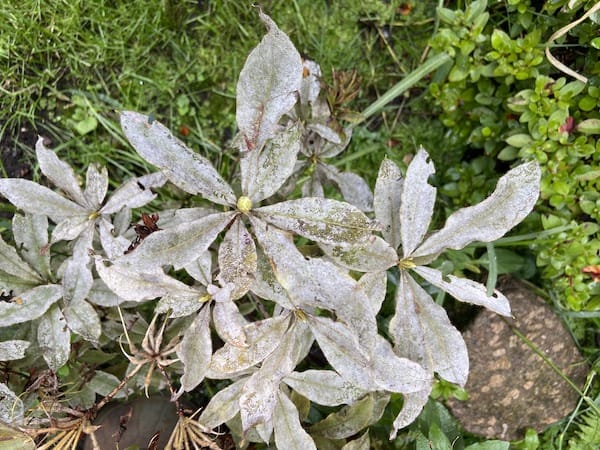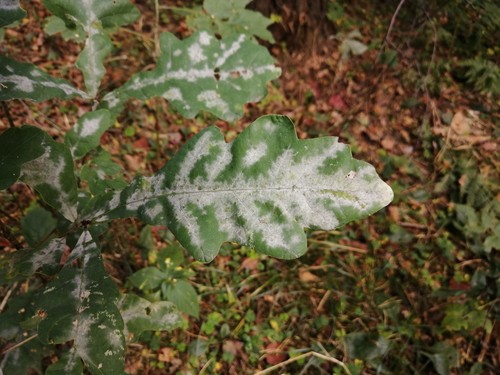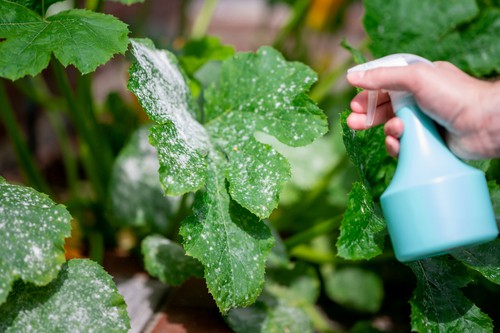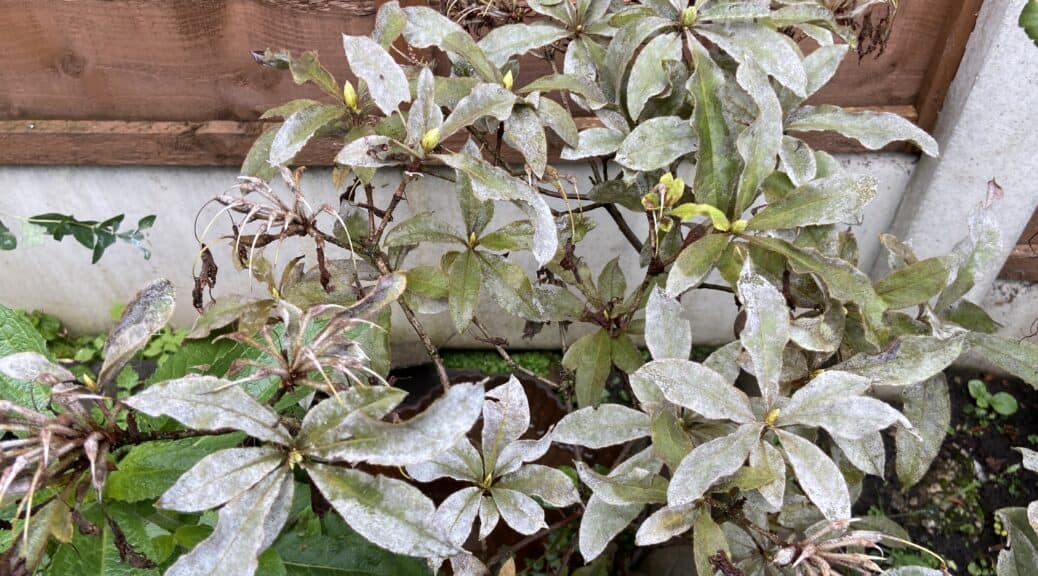
Powdery Mildew – How to control and prevent
Our site is reader supported, this means we may earn a small commission from Amazon and other affiliates when you buy through links on our site.
What is powdery mildew?
Powdery mildew is a fungal disease that plagues many garden plants, I personally have to deal with it every year on my Rhododendrons, Lupins, Azaleas, Hollyhocks and Cornflowers and it’s more about prevention now rather than treating it, I find this is especially true with roses. Not to mention, many vegetables also get powdery mildew too.
It’s probably one of the most common diseases, if not the most common. From my own personal experience, mildew usually appears after a period of wet weather when the weather is starting to warm. In areas of densely planted flowerbeds, poor air circulation also encourages the growth of mildew. It needs warm weather to thrive but combine this with cooler nights, and this is when it really becomes a problem.
It is worth noting that there are many different species of powdery mildew and they usually only attack the same subspecies of plants. So the powdery mildew on your roses is usually a different type of powdery mildew than that on your vegetables. However, they look very similar in appearance and can be treated in the same way. Personally, I find prevention is a much better way to combat it than trying only to treat it when it takes hold.
How to recognise powdery mildew
Powdery mildew shows up as patches of white powder on the plant’s leaves and it is very easy to identify. It also spreads underneath the leaves, stems, buds and flowers. These patches are usually irregular in space and close together, but you do still see the leaf colour between them. Eventually, it can cover every leaf and in severe cases, the entire plant. It’s actually easy to identify because it’s usually not mistaken for any other disease.
The spores on the leaves are spread by wind to the leaves. It doesn’t spread as easily in wet weather as it prefers dry weather. However, the wet weather, usually at night can help spread the disease as mildew also likes humid conditions but in warm weather.
This disease is not fatal to your plants but does take away from their visual attractiveness.
What can you do about it?
I now recommend trying to prevent it in the first place rather than trying to treat it once it takes hold. Prevention has proven to be a much better way to control powdery mildew. It’s very hard to get rid of mildew once it takes hold.
Prevention using copper fungicides
I usually spray my plants with a copper or sulphur fungicide (which you can buy at most garden centres or even online) at the start of spring to try to prevent the problem from happening in the first place. Now, this has not been 100% successful at preventing powdery mildew, but I’m yet to find something that does, but it certainly reduces outbreaks considerably. I usually just treat the plants in my garden I know are very suspectable to mildew, plants that immediately spring to mind are my Rhododendrons, Cornflowers, courgettes and roses.
I also try to think about prevention before planting new plants. I make sure I leave some room between the plants in my flower beds to allow for adequate air circulation. If necessary, I will also thin out the plants when they’ve grown to allow the remaining ones some growing space. I always plant them in a sunny position as this helps, however, only if the plant’s variety grows well in these conditions, some plants obviously prefer some shade, for example, Azaleas.
Also, be careful not to overwater the plants because this creates a waterlogged situation in the soil that’s a breeding ground for the powdery mildew fungal spores. Make sure that the soil is always well-drained, adding horticultural grit if necessary to make it lighter. Also avoid watering plants over the foliage as this can spread the disease too, always water at ground level on the soil directly.
Treatment of powdery mildew
At the first signs of the disease, I always carefully cut away disease foliage and destroy them (don’t put them in your compost bin). Pick up any diseased leaves that have fallen to the ground and dispose of them as well.
If the infection reaches most of the plant, cut it back to the ground to remove all the diseased sections. This lets the plant start with a clean slate of healthy growth. However, do some research beforehand and check if the plants respond well to hard pruning because not all plants do. If you catch the disease early, this won’t be necessary.
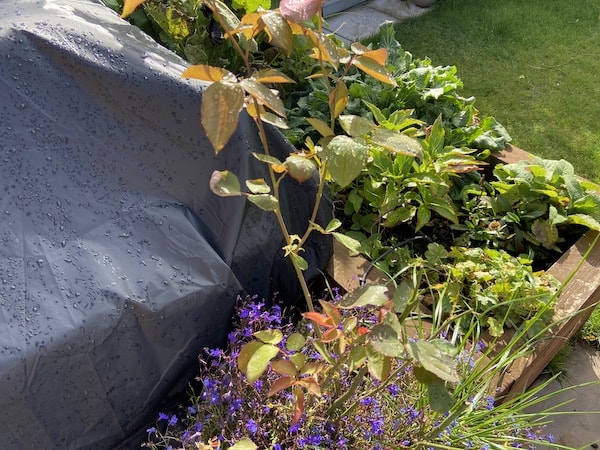
Next, spray your plants with a copper fungicide (of fungicide spray) sold and labelled to treat mildew. If you have roses, it can be worth getting a fungicide that also treats blackspot and rust at the same time.
Using a water spray to hose off the powdery mildew just spreads the fungal spores even further and creates more plants with the disease. So don’t do this.
I hope you have found this information useful, prevention is much better than cure. Powdery mildew can be controlled, although I’ll admit, it is almost impossible to totally prevent it. You just need to deal with it the best you can. I have also tried some home remedies such as using milk and baking soda. For me, this has been no help, and it always comes down to using a copper fungicide or a garden fungicide spray.
